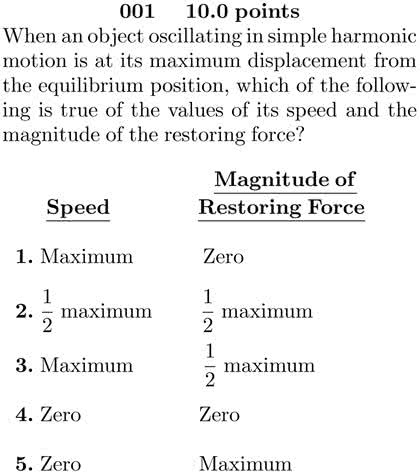PHYS 101 Lecture Notes - Equilibrium Point, Circular Motion

26
PHYS 101 Full Course Notes
Verified Note
26 documents
Document Summary
X = 0 is the equilibrium position. Force is always opposite displacement so it works to bring back object (always a restoring force) Motion through one complete cycle, starting from a compressed and motionless state: When x is at equilibrium position, then speed is maximum and f is. In shm or an sho, f ~ -x. Motion is periodic and oscillatory: simple harmonic motion (shm) T is time for one complete motion related to frequency by t = 1/f. Since force is always changing, so is acceleration therefore you. The total energy in a system is proportional to the square of the amplitude of the oscillation. Example: when a spring stretches 0. 150m when a 0. 300 kg mass is lowered gently on it. Spring is then set up horizontally with the same mass on a frictionless table, and pulled 0. 100 m from the equilibrium point. Therefore, (0. 05/0. 1)^2)= 0. 7 m/s amax = ka/m. amax = 19. 6*0. 1*0. 3 = 6. 5 m/s^2.


